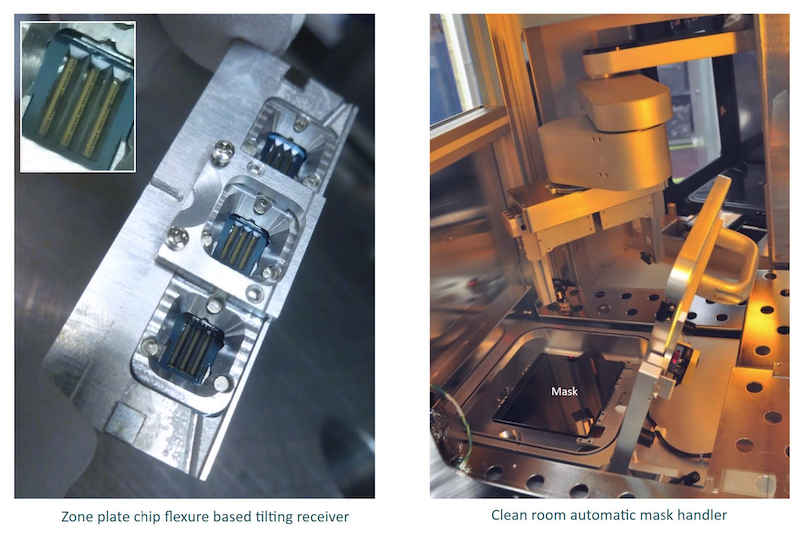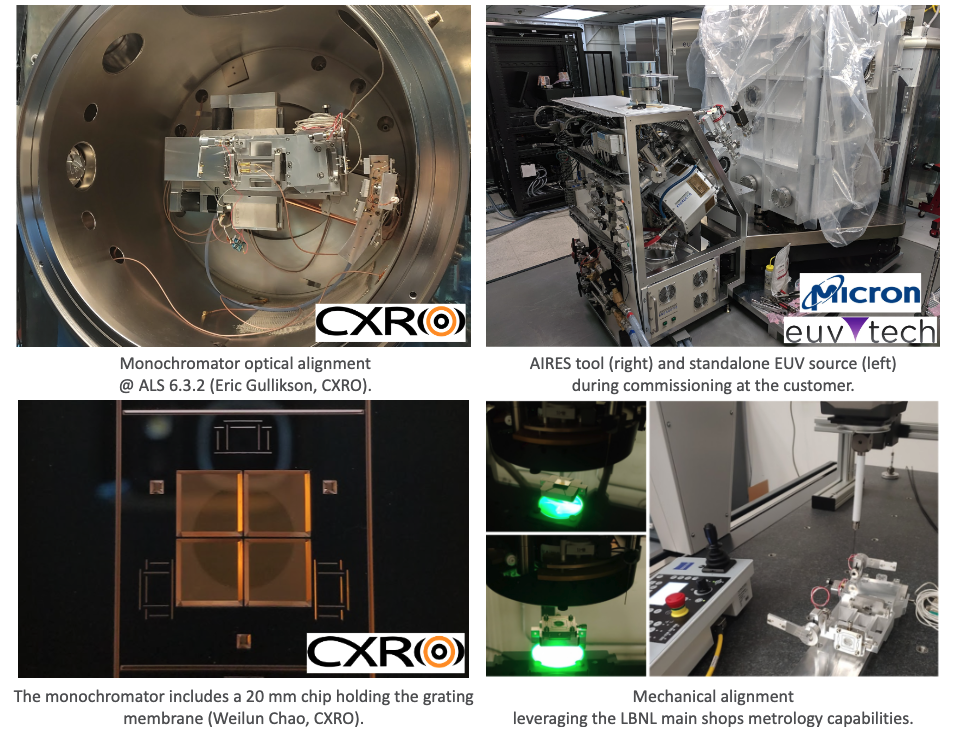The Center for X-Ray Optics at Lawrence Berkeley National Laboratory works to further science and technology using short wavelength optical systems and techniques. We create and operate advanced experimental systems to address national needs, support research in material, life, and environmental science, and extend the forefront of semiconductor manufacturing.
SHARP
Center for X-ray Optics (CXRO) / Advanced Light Source (ALS)
SHARP (SHARP High-NA Actinic Reticle review Project) is a highly-flexible mask-imaging microscope built to support semiconductor research. Masks are glass plates carrying the computer chip patterns that will be transferred onto a silicon wafer using optics that shrink the image further down by a factor four. SHARP is the world’s highest-resolution EUV (extreme ultraviolet) microscope enabling the characterization of mask defects in great detail. Staffed by experts in the field, SHARP is designed to investigate the most pressing issues in photomask development and commercialization, now and far into the future.
The CXRO engineering team designed, built, and was deeply involved in commissioning SHARP at the Advanced Light Source beamline 11.3.2 in 2013. Since then, the CXRO engineering team has provided continuous support on various aspects of the implementation of multiple upgrades:
- Tilting zone plate holder (2014)
- Interchangeable flexures and mask presence sensor for the mask holder (2014)
- Automatic mask handling system (CXRO/Intel collaboration) and adjustable shutter system (2015–2016)
- Laser interferometry encoders for the mask and zone plates stages (2016).
MET5
Center for X-ray Optics (CXRO)
The Berkeley MET5, funded by EUREKA, is an EUV projection lithography tool located at the ALS. With a depth of focus of 30 nm, the 0.5 NA tool requires 1 nm resolution metrology in the three linear directions and 100 nrad in tip/tilt. Wavefront errors need to be smaller than 0.5 nm RMS. Including variable illumination capabilities, MET5 has a proven optical resolution of 9 nm and 0.8 nm stabilization over exposure times as long as 1 min. MET5 includes a two mirror objective with nanometer resolution precision stage systems, and a support/metrology system engineered for high stability. The mechatronics systems are designed to ensure stability against drifts and allow nearly arbitrarily slow experimental resist materials to be characterized.
The CXRO engineering team designed, built, and was deeply involved in commissioning the MET5 facility at the ALS 12.0.1.4 in Q2 2019. Since then, the CXRO engineering team has provided continuous support on various aspects of the implementation of multiple upgrades including:
- Improve vibration from 1.5 nm to 1 nm RMS (Q4 2019)
- Commissioning of standalone source (Q4 2021)
AIRES
Center for X-ray Optics (CXRO)
AIRES (Actinic Image REview System) is a plasma-source based ultrahigh resolution zoneplate microscopy tool that addresses the industry need for Extreme Ultraviolet (EUV) mask imaging and defect printability studies. AIRES features a stand alone discharge produced plasma source providing EUV light to the tool.The CXRO engineering team developed the architecture and design of the AIRES tool. AIRES features a solution to mitigate the impact of ground motion onto the performance of the system. The optical column hosts a monochromator to significantly narrow the wavelength, allowing unique CXRO-developed zoneplates optics to be used. The system successfully produced its first image in January 2020. Since then, the CXRO engineering team has provided continuous support to the customer on various aspects, including delivering a new monochromator upgraded with motorized stages. After the installation in July 2022, the throughput was improved by 2x.
TPI
Center for X-ray Optics (CXRO)
Lithography masks act as the master copy from which wafers are printed, they must therefore be inspected so that any defect can be identified. It is also essential that no particles be deposited on the mask. A recent development in particulate contamination prevention and control has been the use of pellicles. Pellicles are thin membranes placed a few millimeters above the mask to keep particles from falling onto the imaging surface. In 2022, the CXRO engineering team installed the (Through Pellicle Inspection) mask inspection tool at the ALS 11.3.2 beamline. TPI features a working distance long enough to focus past the pellicle. The tool is currently being calibrated. Upon completion, the TPI microscope will be among the highest resolution EUV microscopes in the world, capable of imaging features on a mask with a half-pitch of 25 nm, with potential for even greater resolution with higher-NA zone plates.
More info: http://cxro.lbl.gov/



